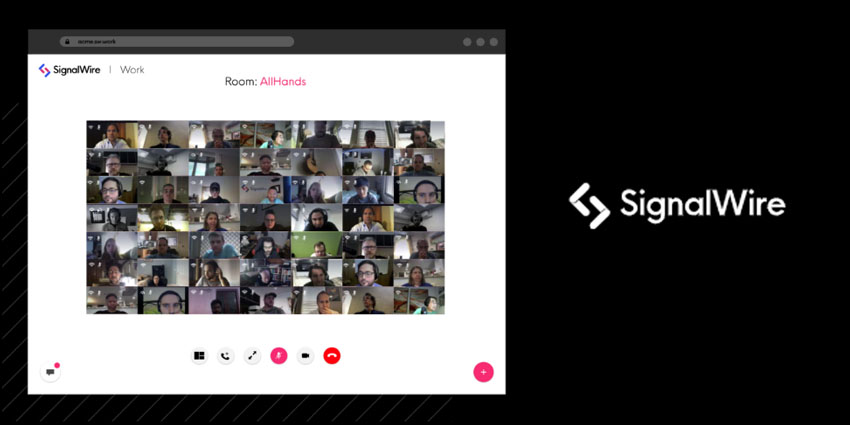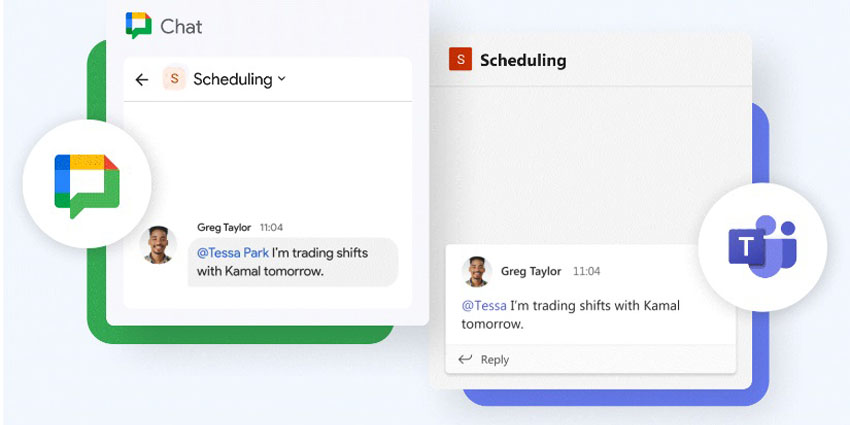While many communications providers have responded quickly to meet growing needs for remote collaboration tools this year, SignalWire have 15 years of their own experience to draw on in this space.
So their new video-based platform, SignalWire Work, was built to meet their own need initially, for a unified virtual office tool offering secure, powerful, and highly customisable videoconferencing. They avoided the temptation to try and replicate the traditional office online, and instead reenvisioned the digital workspace completely — with a UI comprising a set of persistent video meeting rooms, in which colleagues can hop in and out spontaneously, to connect and collaborate at need.
It’s not “the office”…
As Anthony Minessale, CEO and Co-Founder of SignalWire explained, “Replicating the in-person office experience is difficult, and frankly, we wouldn’t want to do that anyway. Offices can be distracting, and in many ways remote is better. So, with SignalWire Work, we want to emulate as many of the positive aspects of physical colocation — building camaraderie and solidifying relationships, without being intrusive or distracting.”

We spoke to Sean Heiney, COO and Co-Founder, who said “we didn’t want a load of ad-hoc meetings, we wanted to be able to have informal conversations and office banter and watercooler talk, but more importantly to be able to just pop in and talk to someone when you get an idea to share.
“We started to build a tool we used to grow our API business, but then COVID happened, and our clients started asking, ‘how do we get this thing that we use with you?”
“So, we raised some new funds, and cherry-picked some of the best developers in the industry, and built out a prototype in less than 2 months”
Overwhelmed by demand from beta onwards, Signalwire have partnered with resellers to bring their platform to market as quickly as possible — offering their premium remote communications experience with privacy and data integrity, high-fidelity voice and up to 4k video, and allowing for over 100 simultaneous streams. Being fully browser-based with nothing to install, advanced machine learning is used to remove background noise, and network conditions are monitored to dynamically optimize bandwidth.
… but, your colleagues are always there
And the UX is very different to anything else in the space, with the menu of open rooms showing live preview of what’s going on in each. “It’s a little weird at first, and we’re definitely on the bleeding edge of a big social experiment, but we try to use always-on video. We have privacy controls that make it less weird, like Do Not Disturb mode”, Heiney explained, before disappearing into a ghostly darkness — so I knew he was still there on the call, but I’d have to ‘knock’ on his screen to get his attention and audio response.
It’s definitely a clever solution to the issue of presence in a remote team, where you continually tread the line between isolation and

concentration, or interruption with alerts and communications. What this platform offers is a way to be aware of others around you and ‘where’ they are, while having the choice of focusing privately, collaborating intensely (such as paired programming in a private room), or drifting into a social space to share clips and GIFs, as easily – in fact, arguably more easily — than strolling down the hallway in a colocated office.
In a space where so many products are rushing to market to answer user demand, it’s refreshing to see something genuinely new, with a great deal of exciting potential. Whether building a remote team from scratch or transitioning to new ways of working in changed circumstances, Signalwire Work is definitely a tool to take a good look at.







